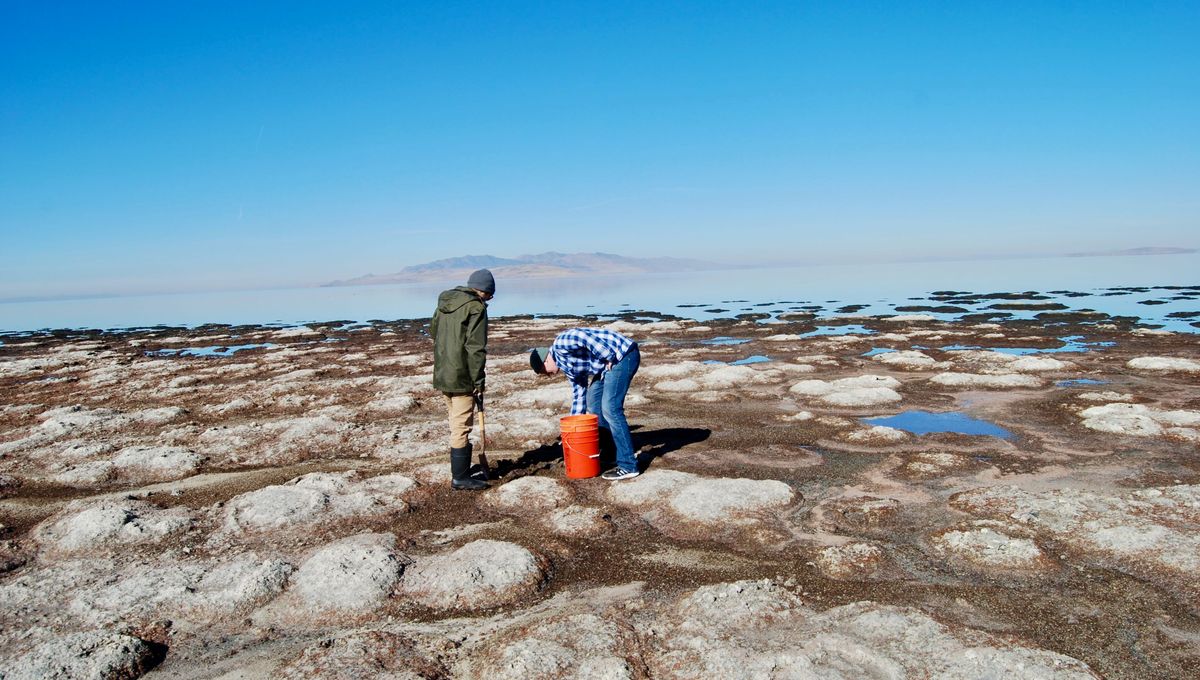
Scientists researching the complex habitats of Utah’s Great Salt Lake sediments had a hunch that the nematodes also known as roundworms lived in these spaces but no one had ever found them – until now. This new discovery suggests there could be a whole web of hidden life within the Great Lake.
A professor and a postdoc student armed with a hammer took to the microbialites, reef-like structures made of calcium carbonate mounds that cover around a fifth of the lakebed, and discovered thousands of tiny worms living there. The breaking of this microbialite revealed several species of worms adding to the only two known multicellular animals to live in the extremely salt waters: brine shrimp (Artemia sp.) and brine fly larvae (Ephydra sp.).
Nematodes are known for their diverse ability to survive in pretty much any habitat and represent one of the world’s most abundant animals with 250,000 species. The Great Salt Lake in Utah has around 15 percent salinity in the southern arm while the northern arm is around 30 percent salinity, making it one of the saltiest water bodies on Earth. The salinity of where the nematodes were discovered is around 20 percent, making it the most saline environment in which nematodes have ever been found.
“Just what is the limit of animal life? What environments can animals actually survive? That captures some imagination about looking at other planets where we might find complex multicellular life,” senior author Prof Michael Werner said in a statement.
To test just how resilient the worms are in their saltwater habitat the team fed half a group their usual diet while feeding the other half bacteria from the lake. The bacteria live in part of the lake that is 50 times more salty than the worms’ environment.
After 24 hours the worms that had eaten the bacteria were still alive while those who had eaten the usual diet were dead very shortly after eating.
“We didn’t expect it to work, but it did!” Werner exclaimed. This suggests that bacteria can help nematodes adapt to highly saline conditions, but more research is needed to identify the mechanisms at play.
The team thinks the nematodes feed on bacteria that form on the microbialites. They also found a slight positive correlation between the presence of arsenic and the abundance of nematodes. They suggest that the nematodes also gain protection from UV exposure and dehydration.
“Even today we’re discovering these amazing things about this lake that’s been sitting on our doorstep for 170 years,” Brigham Young University biologist Byron Adams, a leading expert in nematodes and consult for the study marveled. “It’s an amazing system that Michael has worked to better understand.”
The paper is published in Proceedings of the Royal Society B Biological Sciences.
Source Link: New Creature Discovered Living In Utah’s Great Salt Lake Suggests Whole Web Of Hidden Life